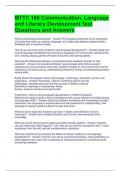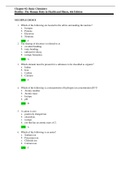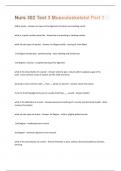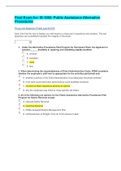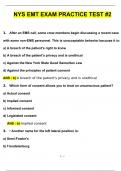Tentamen (uitwerkingen)
MTTC 106 Communication, Language and Literacy Development Test Questions and Answers
- Vak
- Instelling
MTTC 106 Communication, Language and Literacy Development Test Questions and Answers What is phonological awareness? - Answer-Phonological awareness is the awareness of sounds that make up a spoken language- the relationship between spoken/written. Develops later in preschool years. How do you ...
[Meer zien]
